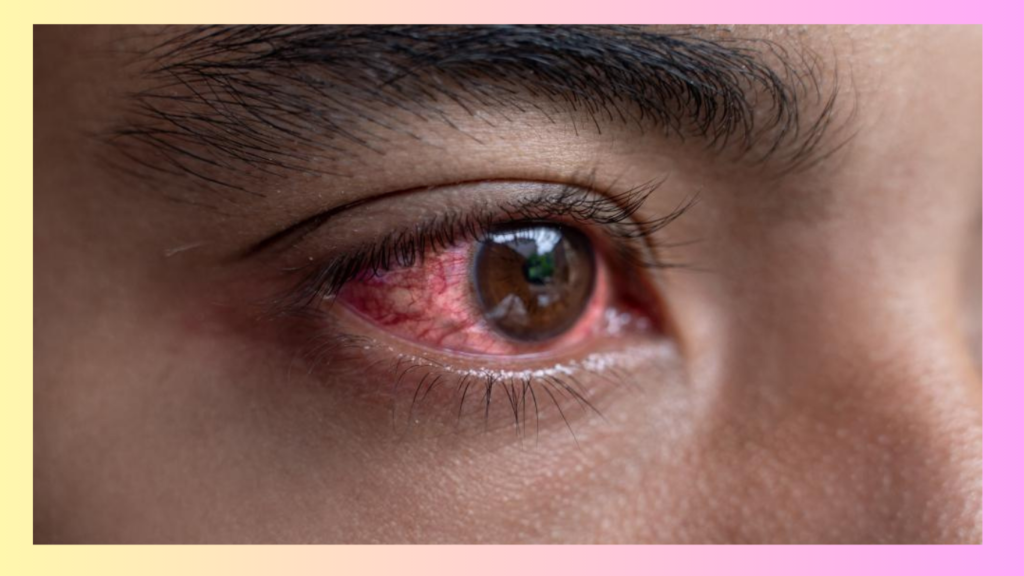
Are you experiencing redness, itching, or irritation in your eyes? If yes, don’t avoid these issues, as you might have Eye flu.The symptoms of eye flu can be mild to severe and sometimes cause temporary vision loss. Here in this blog, we will learn about the symptoms, causes, and prevention methods of eye flu. Let’s get started!
Understanding What Eye Flu aIs?
Eye flu, known as viral conjunctivitis, is an eye infection caused by different viruses. This contagious condition can easily spread from one person to another. The most common type of virus that causes eye flu is adenovirus.
Viruses, bacteria, or allergies can cause eye flu. It is highly transmissible and can easily spread through contact with infected hands or objects. Depending on the cause, conjunctivitis can be contagious, so it’s important to practice good hygiene and avoid touching or rubbing your eyes. If you suspect you have conjunctivitis or are experiencing eye-related symptoms, it’s best to go for a diagnosis with Redcliffe Labs.
Are you Experiencing these Eye Flu symptoms?
Symptoms of eye flu may vary from person to person, depending on what causes the inflammation, but the common symptoms found in all patients include redness, swelling, and itching in the eyes. Other expected symptoms may include:
- The pinkish or red color of the eyes
- Swelling of the conjunctiva or eyelids
- Watery or teary eyes
- Continuous itching, irritation, and burning
- Crusting of eyelids or lashes in the morning
- Discharge of pus and mucus
- Sensitivity of light or burning sensation in eyes
- Blurred vision or unable to see the view properly
Potential risk factors that can lead to Eye Flu:
There might be various reasons for eye flu. Some of the most common ones are demonstrated below:
- Get exposure to someone who is infected with the viral or bacterial form of conjunctivitis
- Exposure to anything allergic.
- Using unhygienic contact lenses or wearing ones that do not fit well
- Not washing your hands and frequently touching your eyes
- Using infected tissues and towels
- Wearing infected eye makeup
How to prevent Eye flu infection?
If you have noticed any of the symptoms mentioned above, you must start treatment and prevention promptly. Go and consult your Doctor about your condition. Usually, the acute eye flu takes 2-3 days to go away. But in some cases, it can take up to 10-15 days, depending upto the symptoms you suffer from. Preventing eye flu can be beneficial to avoid the discomfort and inconvenience it causes. Here are some helpful tips for evading eye flu.
- Regularly wash your hands, and when you have eye-flu symptoms. Also, avoid frequent eye touching.
- Try to avoid wearing contact lenses until the pinkeye is gone.
- Always sterilize your contact lenses after using them.
- Avoid wearing eye makeup.
- Do not use shared towels or clothes, which can spread the infection.
- Take medications as prescribed by your Doctor.
- Ensure proper ventilation in enclosed locations such as offices or bedrooms, as inadequate air circulation increases the risk of contracting infection.
Remember that the eye is one of the most sensitive and important parts of our body that needs care too. However, protecting the eye from infection and viruses is crucial. It’s better to follow preventive measures to avoid eye-flu-like infections.
Know different types of Eye flu infections
There are distinctive causes of conjunctivitis, such as viruses and bacteria. However, it could be because of other reasons, such as allergies and environmental irritants.
- Viral conjunctivitis: Pinkeye or eye flu is commonly caused by adenovirus, but in some cases, other viruses such as simplex virus and varicella-zoster virus are also suspected to cause infection.
- Bacterial conjunctivitis: Acute bacterial conjunctivitis is primarily due to Streptococcus pneumoniae, Staphylococcus aureus, and Haemophilus influenzae. Wearing unhygienic lenses may be the expected cause of bacterial conjunctivitis. The infection can easily spread through direct or indirect contact with the droplets from an infected person.
- Allergic conjunctivitis: It is caused by allergy-causing components. The body releases an antibody named immunoglobulin to protect from allergens. If you are experiencing intense itching, teary eyes, and inflammation in your eyes, allergic conjunctivitis can be the reason.
Symptoms of these conditions include eye pain, blurred view, burning eyes, and light sensitivity. Serious eye conditions can cause redness of the eyes. However, if your symptoms don’t get better within 12 to 24 hours, make an appointment with Doctor to diagnose conjunctivitis by examining the symptoms.
How is eye flu diagnosed?
Pink eye, or eye flu, can be diagnosed through a different procedure, such as knowing the patient’s history, symptoms, and a physical examination of the eyes. Your ophthalmologist may ask about recent health history, exposure to individuals with conjunctivitis, and current symptoms. During the physical examination, the Doctor will inspect the eyes for signs of eye flu, such as redness, discharge, and swelling. Sometimes, a doctor may take a fluid sample from the affected eye for laboratory analysis.
Should I go to the Doctor for Eye Flu Treatment?
Eye flu is one of the most common diseases people of any age can suffer. The symptoms of an eye cold can range from mild irritation to severe pain and sometimes swelling. Even though eye flu is usually mild, it can sometimes lead to serious eye problems. Practicing good hand-washing techniques and not sharing personal items can help prevent transmitting eye flu. Seek professional help or eye tests to treat it on time.
For any blood tests, Choose your trusted diagnostic partner, Redcliffe Labs. Our express slots will help you test within 45 minutes.



